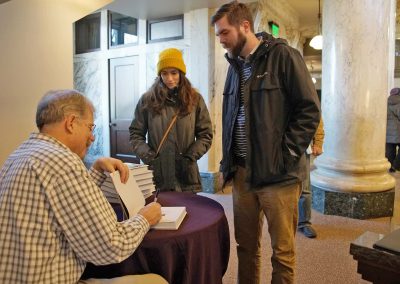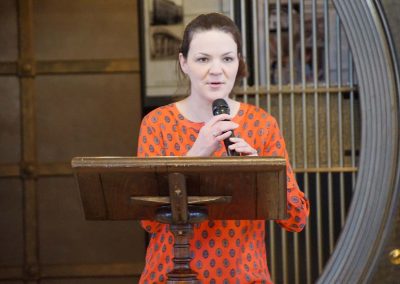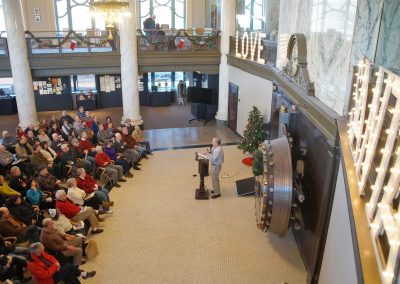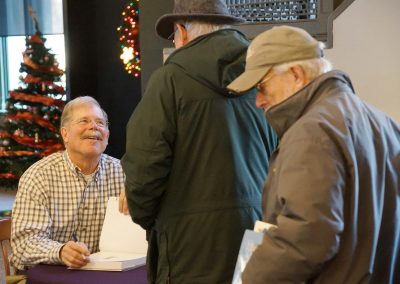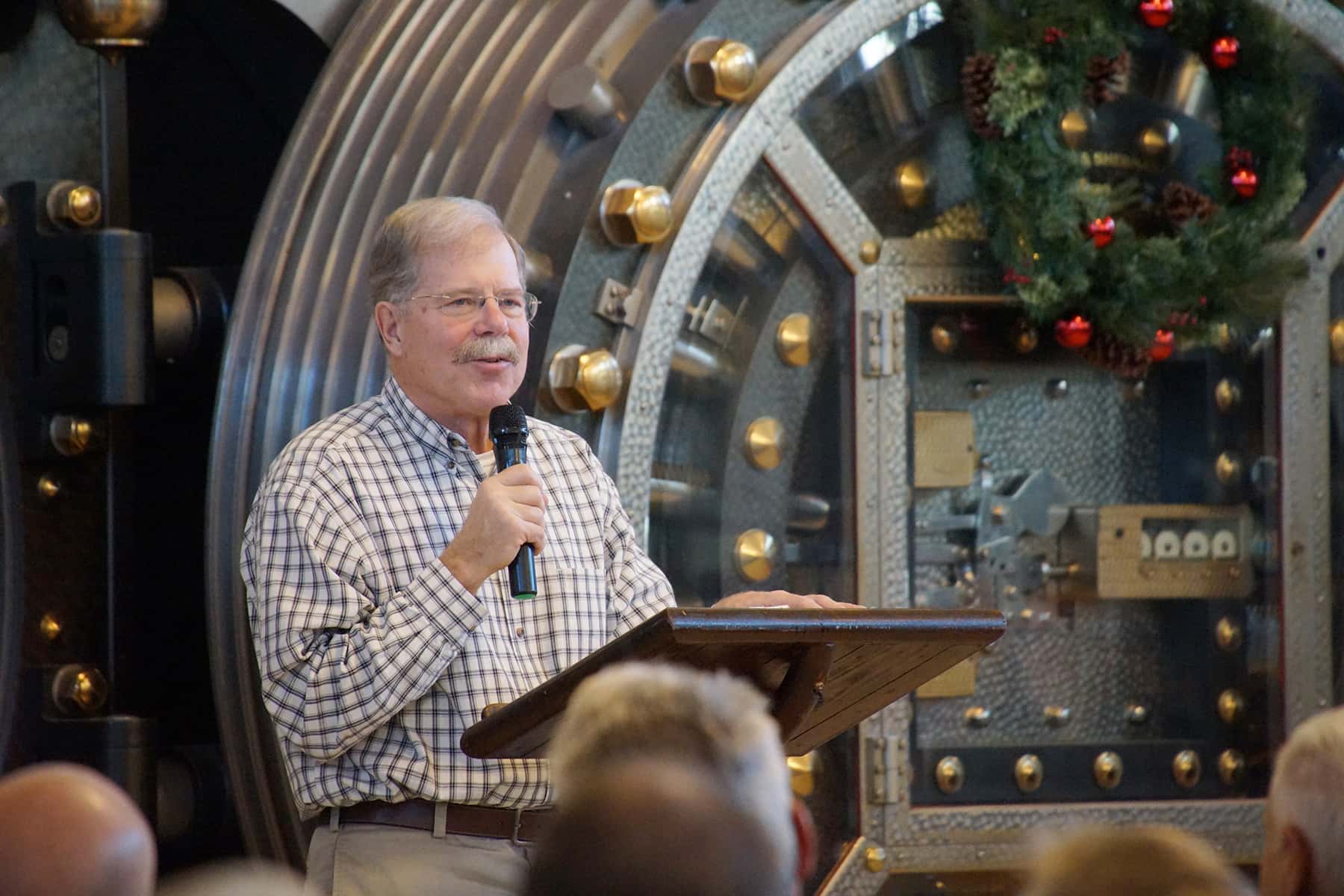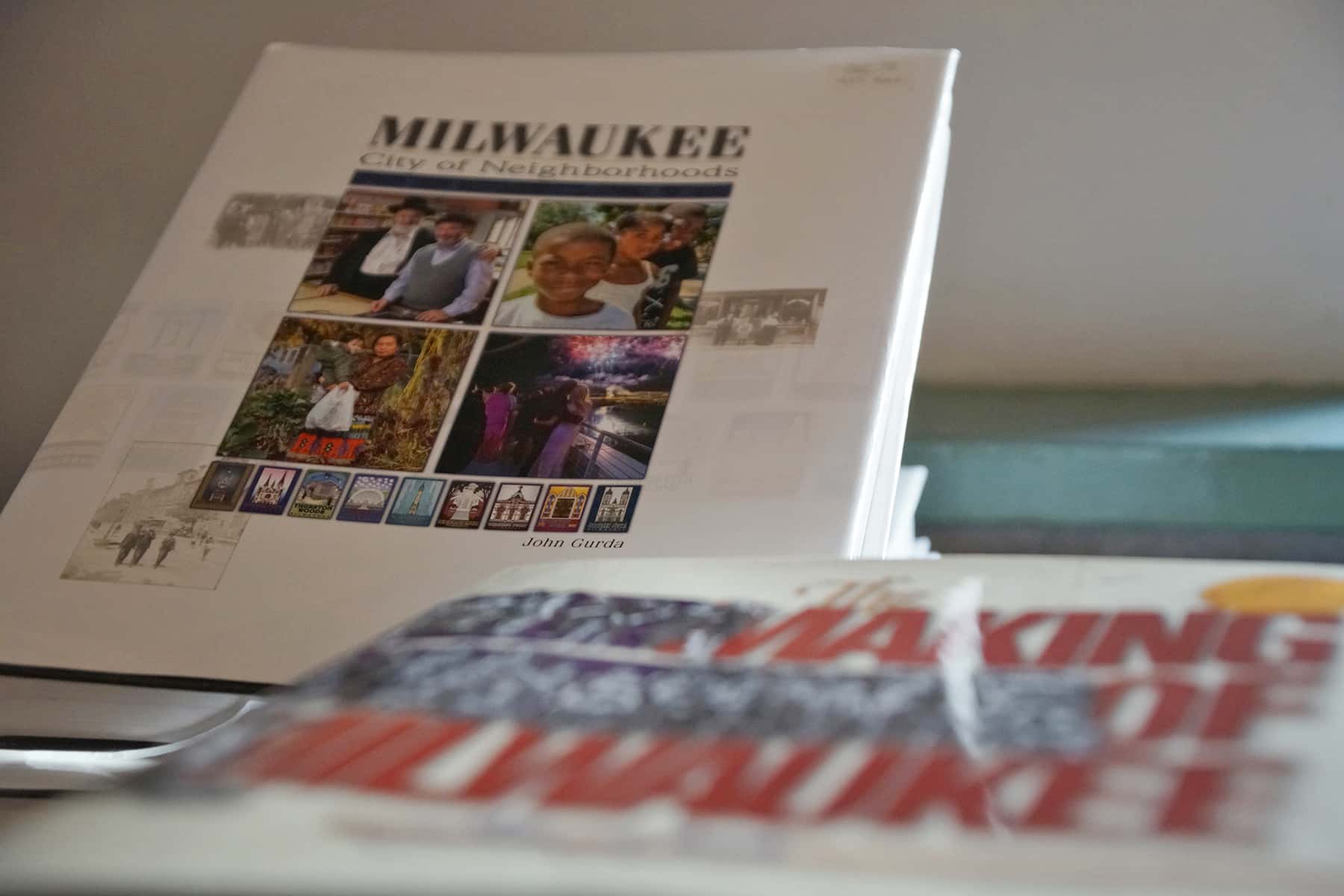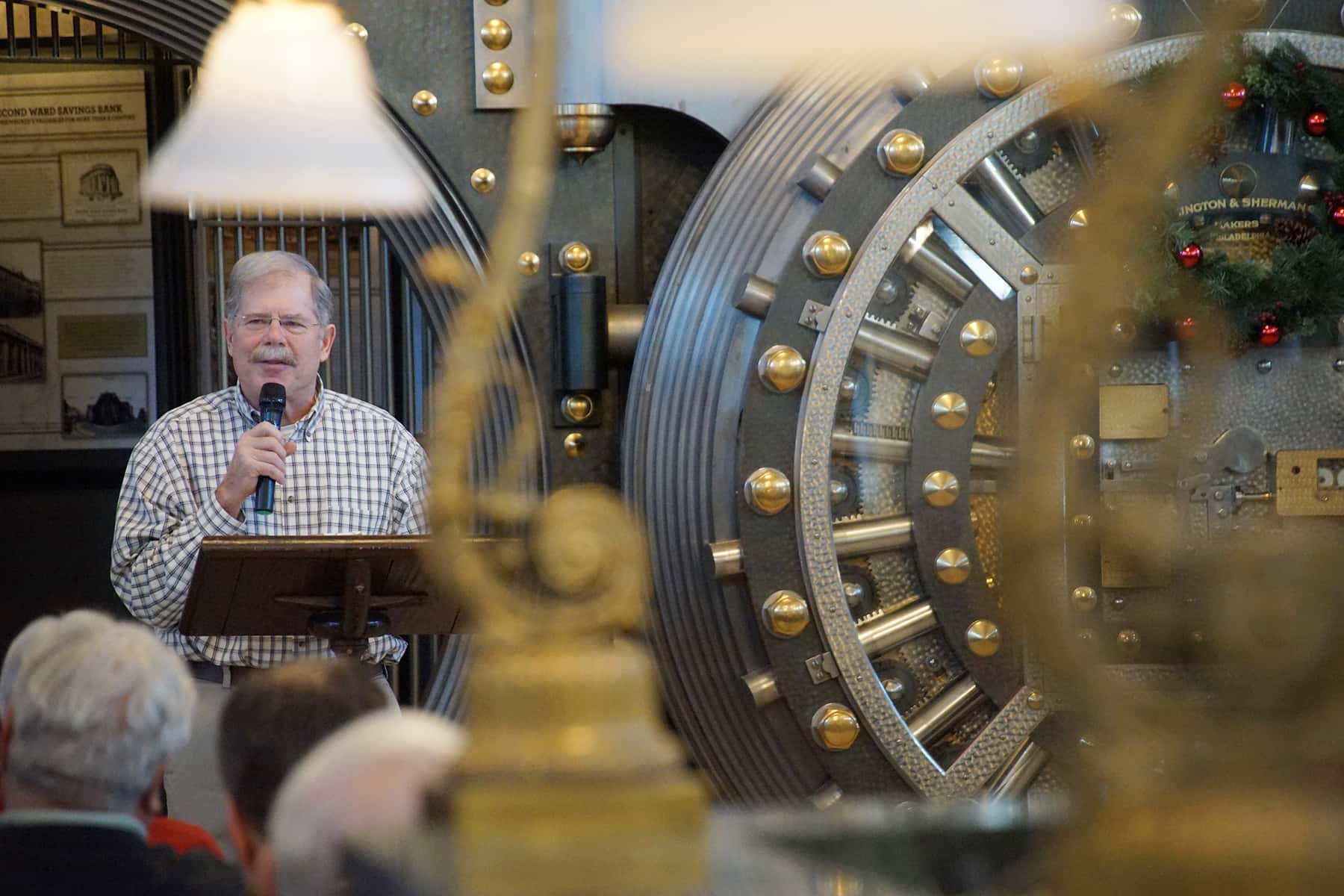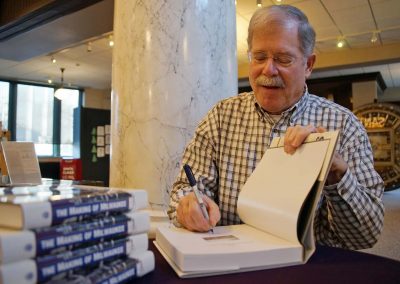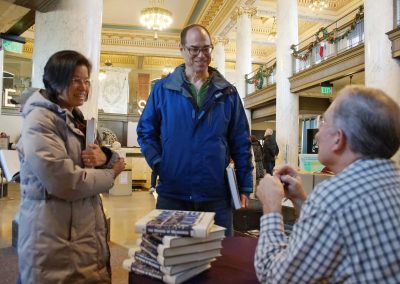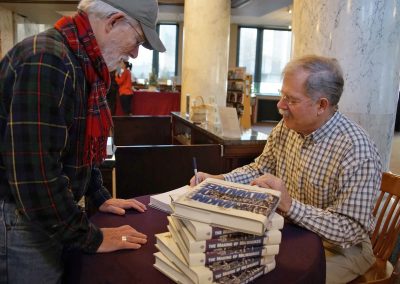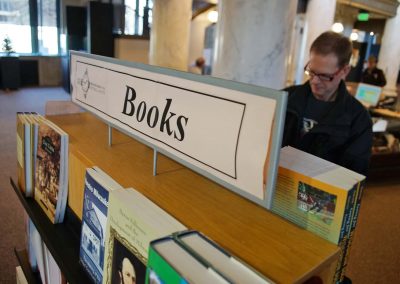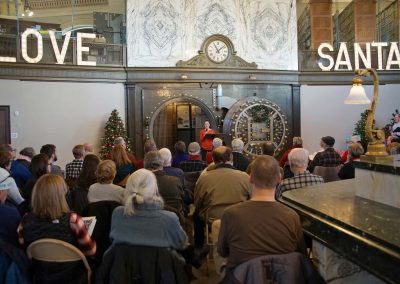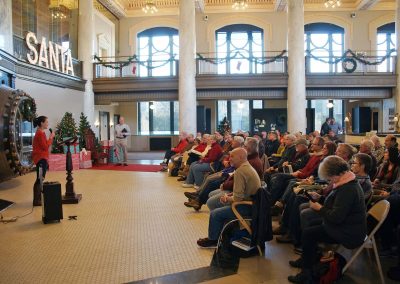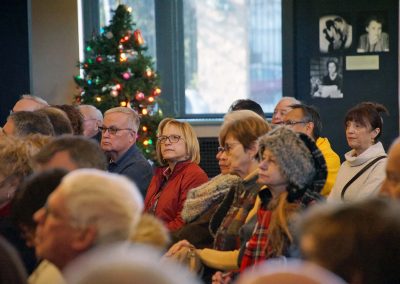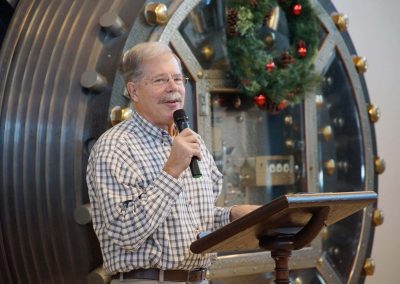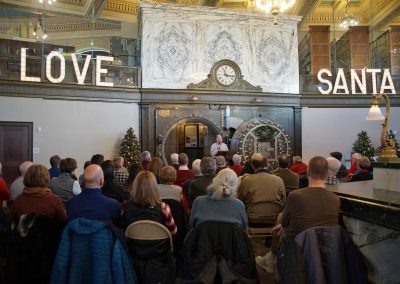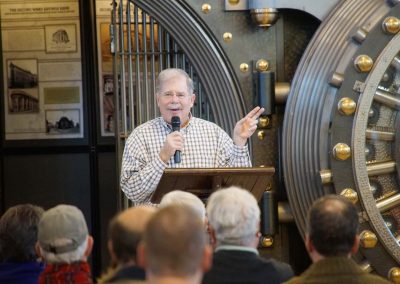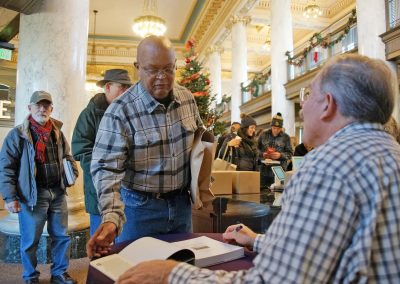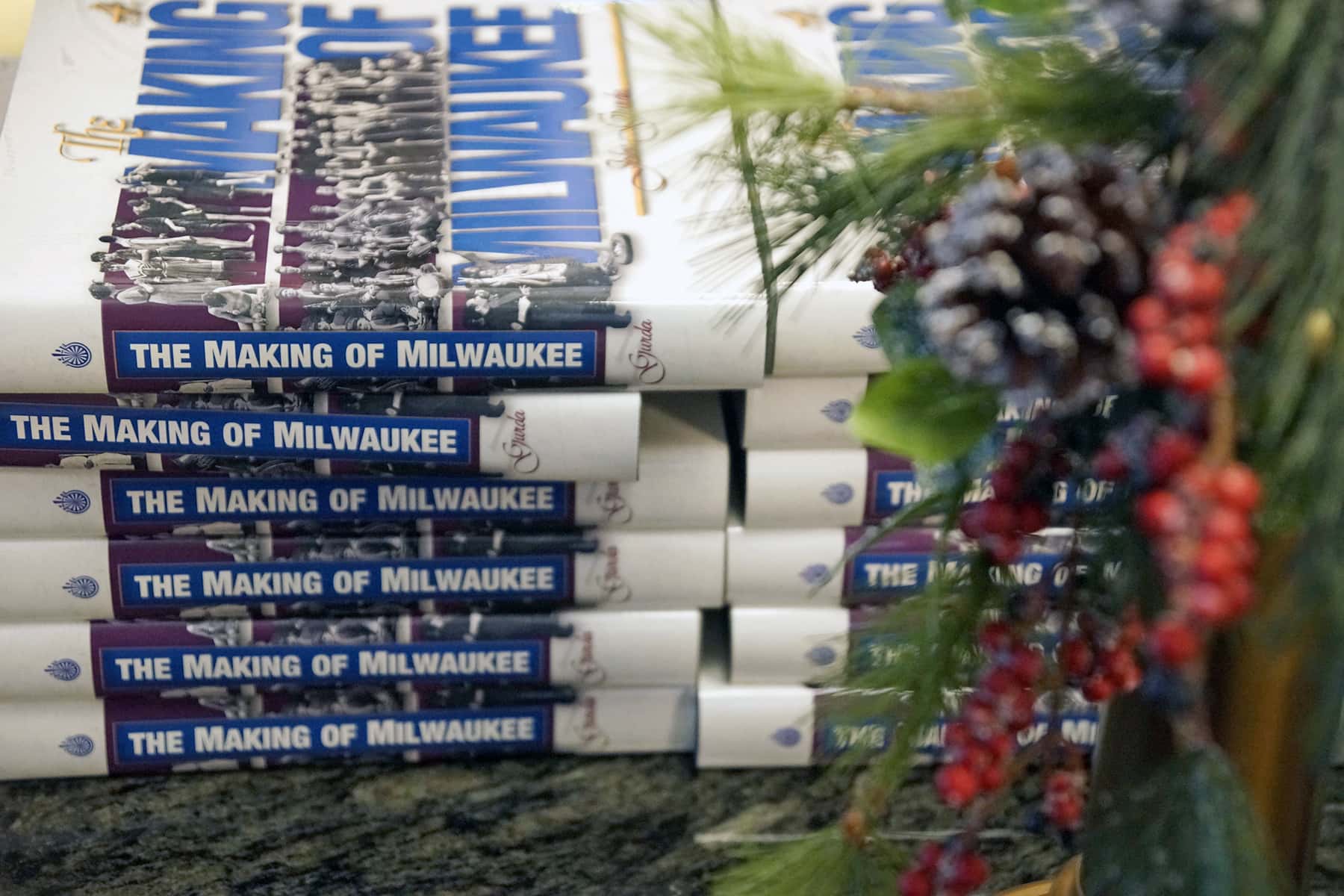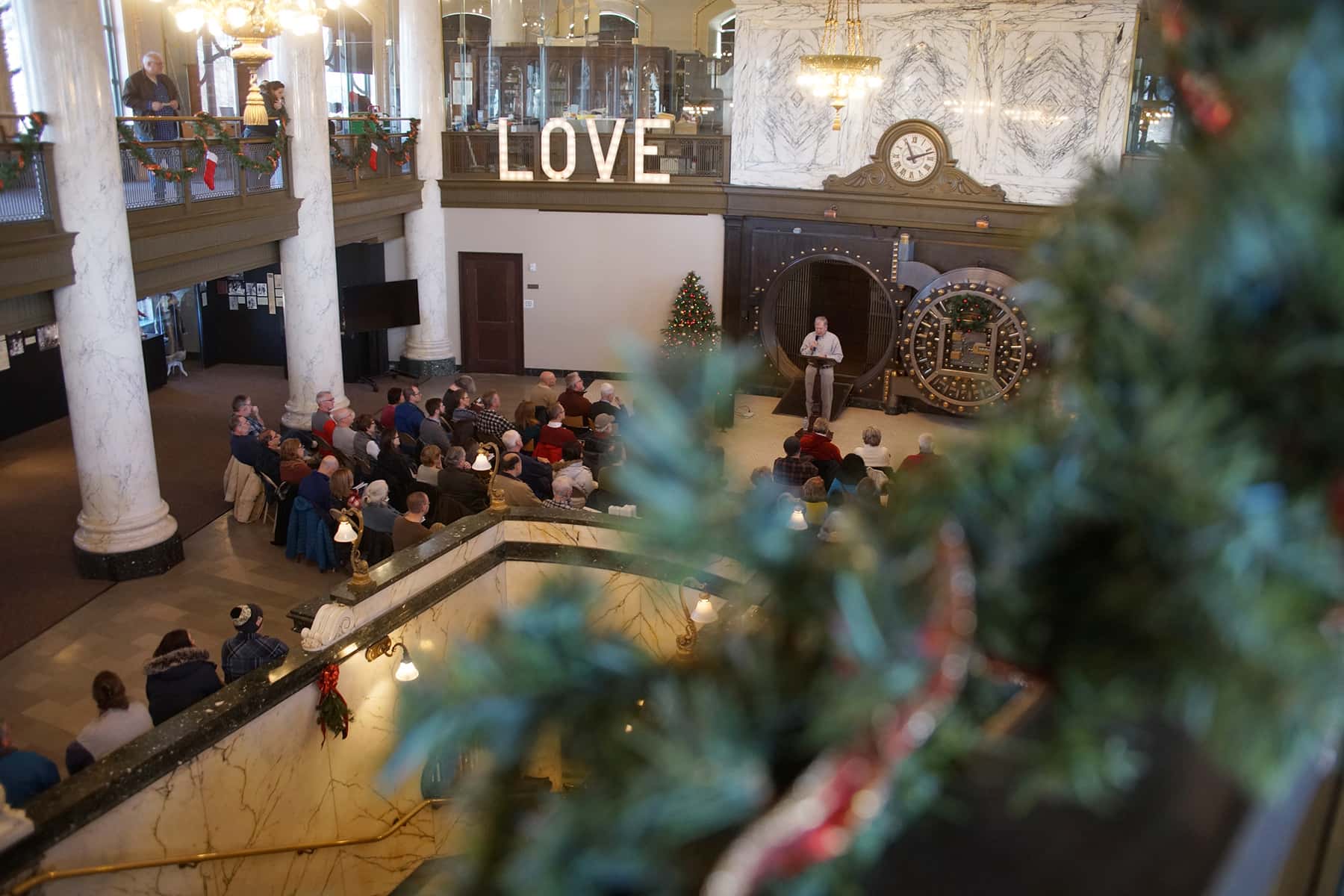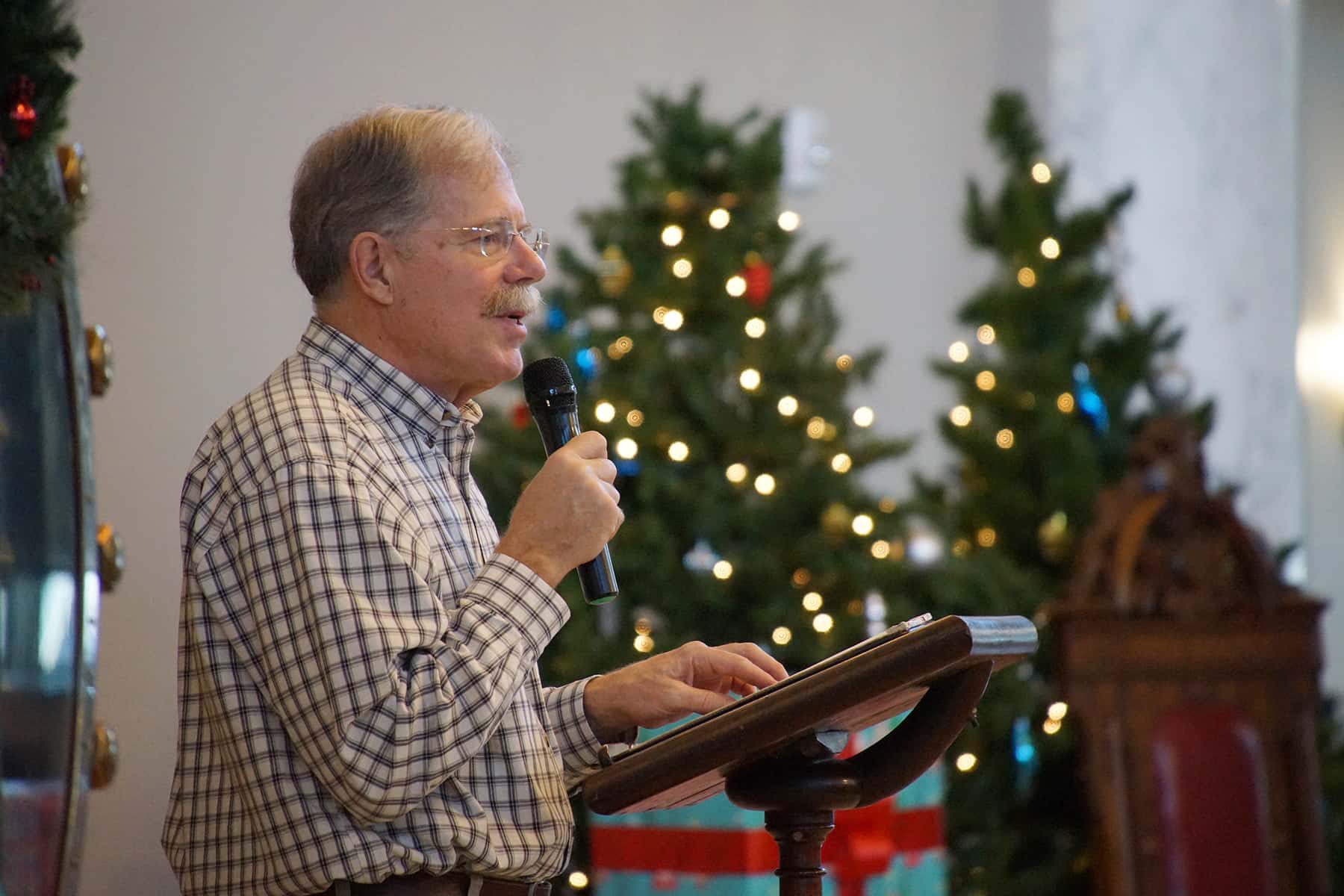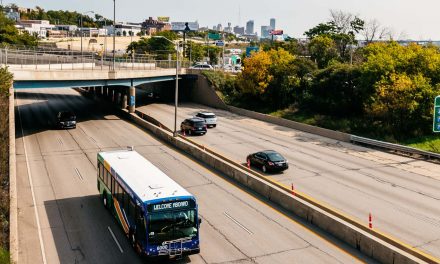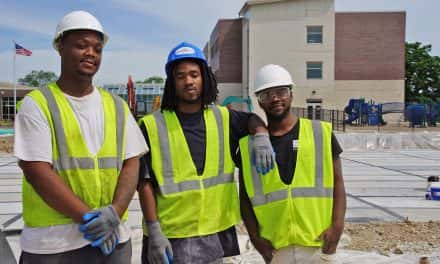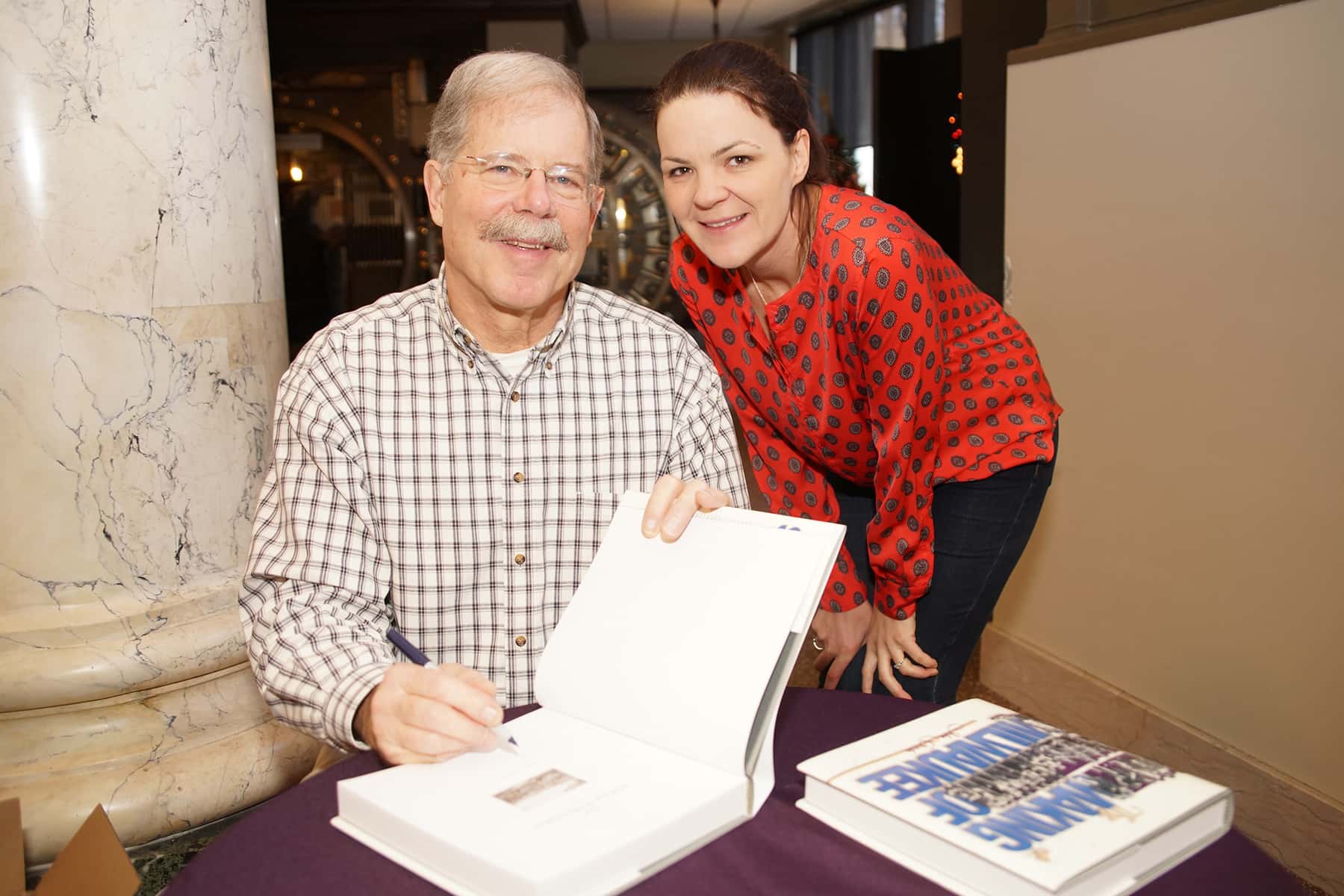
Historian John Gurda spoke at the Milwaukee County Historical Society (MCHS) on December 8 to a packed crowd of historical enthusiasts, sharing his insights into local developments from the past two decades and why a major update was made to his classic book about the city.
First published in 1999, John Gurda’s book The Making of Milwaukee has been used as a standard history resource for the community it chronicles. It tells the story of how a Native American trading post at the crossroads of three rivers by a Great Lake became a thriving European settlement under Solomon Juneau, Byron Kilbourn, and George H. Walker in the early 1800s. The book follows the frontier landscape into the 20th Century as the city’s immigrant culture, political conflict, and business expansion formed the midwestern metropolis.
“This book tells the story of our community and is a resource for many. From students, to locals, to new residents of Milwaukee, people seek out this book so they can understand our city. The fourth edition continues a legacy of telling a complete and interesting story of Milwaukee,” said Mame McCully, Executive Director of the Milwaukee County Historical Society which has publishes The Making of Milwaukee.
While there had been some revisions of the text in editions published over the past twenty years, the content did not cover any history that moved into the 21st Century. With this forth edition, Gurda added a new chapter that covers Milwaukee history from the year 2000 and right up until the results of the 2018 midterm election in November.
Before the public talk at MCHS, Gurda had written about the process of updating his “magnum opus.”
The most challenging task by far was telling the story of Milwaukee’s last two decades. I had thought I could tack some salient facts and events onto the previous conclusion and consider the update done, but it quickly became obvious that a new chapter was required.
He said that history had a way of framing the context of current events. So it was hard to have that 20/20 hindsight in realtime, because significant events today may be irrelevant in the future. As such, he was unable to draw conclusions to how many current issues would play out, like the impact from Foxconn or the role of water in the local economy.
“Into a New Millennium,” the book’s new chapter, doesn’t answer any of those questions, but it does chronicle some other salient trends. I highlighted four: political tumult on every level of government, the unprecedented wave of development transforming downtown and its adjacent neighborhoods, the continuing crisis in the inner city, and the emergence of a new economic order rooted in technology.
As America’s most “foreign” city, the nation’s beer capital, “the Machine Shop of the World,” and the epicenter of municipal Socialism, Gurda’s latest installment adds new life into his enduring work. It will continue to stand as a literary monument for the city, even after a new decade passes and it requires further contemporary updates.
This audio was recorded live during John Gurda’s “Milwaukee in the New Millennium” presentation at MCHS, and the supporting images capture highlights from the event.

